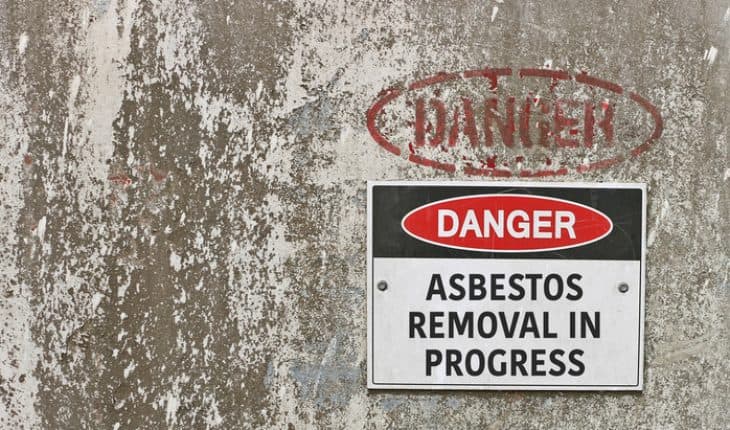Asbestos was once hailed as a miracle material that was resistant to heat, chemicals and water. Although it was banned in the UK in 1999, it is still found in our environment in older buildings where it was used as insulation, lagging and a construction material. Here, Rosie Rosati, health advocate for the Mesothelioma + Asbestos Awareness Centre in the US where asbestos is strictly controlled but not completely banned, explains what asbestos is and how it may effect your health at home and work.
What is Asbestos?
The short answer is that asbestos is a fibrous mineral once widely used during the construction of homes and buildings, as well as the manufacturing of commercial products and appliances. It is resistant to heat, chemicals and water, and is a sturdy component for building. These naturally-occurring fibers were mined and used abundantly during the early and mid-20th century, exposing many mine workers, construction workers and others to the mineral.
As time passed, researchers and medical professionals learned more about the ill effects of the mineral, especially its link to several diseases, including cancer. They learned that those who were exposed to the toxic fibers were at risk of developing a rare type of cancer called mesothelioma, an aggressive disease with a life expectancy of only 1-2 years following diagnosis.
In the 1970s, the United States began regulating its use in retail products and the construction industry. Although its use has greatly declined since the late 20th century, asbestos has not been completely banned in the United States and is still used in certain industries and materials.
Health Concerns
Exposure may eventually lead to diseases like asbestosis, lung cancer and mesothelioma, which can take between 10 and 50 years to develop. While symptoms can be nonspecific and difficult to pinpoint, recognizing them sooner can lead to early detection and a better prognosis for those who are diagnosed. If you exhibit common symptoms such as persistent coughing, chest and/or lower back pain, difficulty swallowing, or shortness of breath you should consult a doctor, no matter how minor your symptoms appear to be.
Asbestosis, a degenerative respiratory condition that can be a precursor to mesothelioma. Asbestos-related lung cancer, which is commonly associated with smoking and tobacco use, may also be caused by inhaling the fibers. To avoid coming into contact with asbestos containing materials, be sure to check labels and pay attention to consumer safety reports, as it may still exist in products like adhesives, cement, paint, flooring, and fire blankets, among other items.
Who is at risk?
Due to its widespread use throughout much of the 20th century, millions of people were exposed to asbestos in the home, at work and while using everyday products. Today, mesothelioma is the number one occupational cancer, and shipyard workers, railroad workers, construction workers and firefighters face higher risks of coming into contact with asbestos on the job. Their spouses and families may also be at risk if they come into contact with contaminated work clothing and inhale the disturbed fibers.
Knowing where the mineral could be present may help prevent health issues down the road. Stay up to date with consumer safety information and be aware of what materials may include asbestos. If you are a homeowner, getting your home checked for asbestos is an important step toward protecting your family’s health. If your home was constructed between 1930 and 1980, there is a higher chance that it was built with asbestos-containing materials. Keep an eye out for damaged pipes, and hire a professional to perform an asbestos inspection if you are unsure whether your home is at risk.
- Mouth cancer: signs you must not ignore - 14th November 2025
- Global Atrial Fibrillation Awareness Week - 14th November 2025
- New research uncovers how the microbiome helps fight melanoma - 14th November 2025







